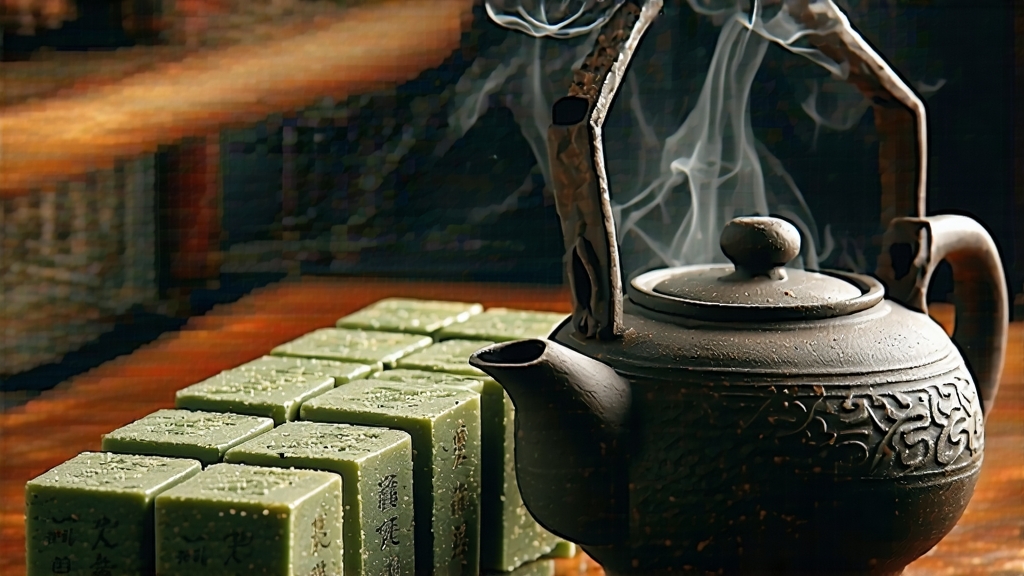
Tucked away in the humid, karst-pocked mountains of southern Guangxi, Liu Bao tea has spent four centuries quietly fermenting while the world argued about the difference between “black” and “dark” tea. To the Chinese, it is heicha—literally “dark tea”—a post-fermented sibling to the better-known pu-erh. To the Cantonese dockworkers of the 18th century, it was the thirst-quenching ballast that sailed down the Xun River to Hong Kong and, eventually, to the dim-sum tables of Malaysia and Singapore. Today Liu Bao is emerging from obscurity, offering wine-like complexity, digestive comfort, and a living lesson in microbial terroir.
History: From Border Currency to Maritime Gold
Liu Bao’s recorded story begins in the Qing-era county of Cangwu, Guangxi, where tea was compressed into 500-gram “pillars” and strapped into bamboo baskets called tongs. Because the county seat lay in Liu Bao village, the tea took the village’s name. Traders of the Guangxi-Guangdong Tea Guild discovered that the six-month river journey to Hong Kong transformed the leaf: river mist, tropical heat, and the rocking of cargo boats coaxed a mellow, reddish liquor that calmed stomachs battered by ship rations. By 1800 Liu Bao was accepted as tax currency along the Pearl River delta, and by 1903 it was ballast in the coolie ships that carried Chinese laborers to Malaya. There, tin-mine bosses paid workers partly in Liu Bao, believing it prevented beriberi. The tea never returned; instead it aged in Kuala Lumpur kopitiam storerooms, acquiring a cult following among Nanyang Chinese who still call it “old taste.”
Micro-Terroir: Why Guangxi Tastes Different
Pu-erh grows on misty Yunnan plateaus above 1,200 m; Liu Bao huddles below 600 m in a subtropical basin where annual humidity hovers at 80 %. Lateritic soil rich in iron and aluminum stresses the tea bushes (predominantly the medium-leaf Qimen cultivar), concentrating polyphenols. Night fogs rolling off the Xun River act like a natural humidifier, encouraging leaf surface yeasts even before the tea is picked. The result is a raw material already half-way to fermentation while still on the bush.
Harvest Calendar: Picking for Microbes
Spring plucking (Qingming to Guyu) yields tender one-bud-two-leaf sets high in amino acids; these lots become “light” Liu Bao prized for floral top notes. Summer rain-harvest leaves (May–July) are thicker and more tannic—ideal for the classic style that will stand up to decades of aging. Autumn teas, picked in October’s dry spell, offer the highest concentration of aromatic glycosides and are often reserved for boutique tongs destined for Kuala Lumpur collectors. Winter picking is avoided; the bushes need to store starch for the next microbial banquet.
Craft: The Six Acts of Liu Bao Alchemy
- Sha Qing (Kill-Green): Leaves are pan-fired at 180 °C for three minutes—longer than green tea, shorter than oolong—to destroy leaf enzymes yet preserve microbial spores.
- Rolling: A 20-minute machine roll ruptures 45 % of cell walls, releasing sugars that will feed Actinomycetes later.
- Sun-Drying: Spread on bamboo screens for six hours, the maocha reaches 10 % moisture while airborne yeasts settle like invisible pollen.
- Dui Wo (Wet-Piling): The signature step. Leaves are sprayed to 28 % moisture, piled 70 cm high, and covered with jute sacks. Internal temperature climbs to 55 °C within 36 hours; every 48 hours the pile is turned, allowing oxygen to shift microbial dominance from yeasts to bacteria. After 25–30 days the leaf turns chestnut-brown and develops the tell-tale “betel-nut” aroma—part camphor, part dried longan.
- Compression & Basketting: The tea is steamed for 30 seconds, pressed into 30–50 kg gunny-lined bamboo baskets, and left to air-dry for another week. The bamboo imparts a faint green-bark sweetness that later matures into sandalwood.
- Aging: Guangxi traders store baskets in riverside warehouses with open clerestory windows; humidity cycles between 65